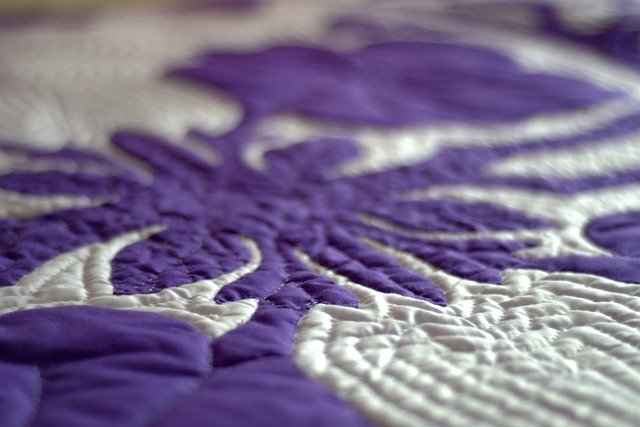Botanical Tapestries: The Art of Floral Embroidery in Home Decor
Embark on a journey through the delicate world of floral embroidery, where thread and needle intertwine to create stunning botanical tapestries. This age-old craft is experiencing a renaissance in home decor, transforming living spaces into vibrant gardens of textile artistry. From intricate wall hangings to embellished throw pillows, floral embroidery is blooming in unexpected places, adding a touch of nature's elegance to modern interiors.

Blooming Trends: Modern Interpretations of Floral Embroidery
Contemporary floral embroidery transcends traditional boundaries, embracing bold color palettes and innovative techniques. Oversized blooms on minimalist backgrounds create striking focal points in modern interiors. Abstract interpretations of florals, using unconventional stitches and mixed media, offer a fresh take on the classic motif. The rise of 3D embroidery adds depth and texture, transforming flat surfaces into tactile gardens. Designers are also exploring the intersection of technology and craft, using digital embroidery machines to create intricate, large-scale pieces that blur the line between artisanal and high-tech.
From Wall to Wardrobe: Versatile Applications in Home Decor
Floral embroidery’s versatility shines in its myriad applications throughout the home. Embroidered wall hangings serve as alternative art pieces, infusing spaces with organic warmth. Throw pillows and bedding adorned with delicate stitched blooms add a layer of sophistication to living and sleeping areas. Even unexpected items like lampshades and curtains become canvases for floral expression. The trend extends to furniture, with embroidered upholstery bringing new life to vintage pieces. This adaptability allows homeowners to incorporate botanical beauty in ways that suit their personal style, from subtle accents to bold statements.
Sustainability Stitched In: Eco-Friendly Approaches to Floral Embroidery
As sustainability becomes increasingly important in home decor, floral embroidery offers an eco-conscious alternative to mass-produced decorations. Artisans and DIY enthusiasts are turning to organic, plant-based threads and recycled fabrics as base materials. Natural dyes extracted from flowers and plants create vibrant, eco-friendly color palettes. The slow, meditative process of hand embroidery also aligns with the growing movement towards mindful consumption and appreciation for handcrafted goods. By choosing embroidered pieces, homeowners not only beautify their spaces but also support sustainable practices and traditional craftsmanship.
DIY Delight: Embracing the Craft of Floral Embroidery at Home
The resurgence of floral embroidery has sparked a DIY revolution, with enthusiasts of all skill levels picking up needle and hoop. Online tutorials and kits have democratized the craft, making it accessible to beginners. Starting with simple daisy chains or leaf patterns, novices can gradually progress to more complex designs. The therapeutic nature of embroidery, with its repetitive motions and focus on detail, offers a welcome respite from digital overload. Creating personalized embroidered pieces for the home fosters a deeper connection to one’s living space, infusing it with handmade charm and personal significance.
The Language of Flowers: Symbolism in Embroidered Designs
Floral embroidery carries more than just aesthetic value; it speaks a silent language of symbolism. Different flowers convey various meanings, allowing homeowners to imbue their spaces with personal significance. Roses might represent love and passion, while lilies symbolize purity and rebirth. Incorporating these meaningful motifs into home decor creates a deeper narrative within the space. Some embroiderers take this concept further, creating entire stories or family histories through floral compositions. This layer of symbolism adds intellectual and emotional depth to the visual beauty of embroidered pieces.
Fusion of Traditions: Global Influences in Floral Embroidery
The global nature of modern design has led to fascinating fusions in floral embroidery styles. Mexican folk art influences might mingle with Japanese sashiko techniques, creating unique hybrid designs. Indian zardozi embroidery, with its metallic threads and beadwork, lends a luxurious touch to Western-style floral patterns. This cross-pollination of cultural traditions results in rich, diverse embroidery styles that reflect our interconnected world. Homeowners can explore these global influences to create eclectic, worldly interiors that celebrate cultural diversity through the universal language of floral beauty.
Beyond the Hoop: Innovative Materials and Techniques
Innovation in floral embroidery extends to the very materials and surfaces used. Artists are exploring unconventional canvases like wood, metal, and even concrete for their floral designs. Experimentation with materials such as paper threads, wire, and recycled plastics pushes the boundaries of traditional embroidery. Some creators incorporate LED lights or thermochromic threads that change color with temperature, adding an interactive element to embroidered pieces. These innovations open up new possibilities for integrating floral embroidery into modern interiors, creating dynamic, multi-sensory experiences within the home.
Cultivating Community: The Social Aspect of Floral Embroidery
The revival of floral embroidery has fostered a vibrant community of creators and enthusiasts. Social media platforms showcase a blooming network of embroiderers sharing techniques, inspiration, and finished works. Local embroidery circles and workshops provide spaces for in-person connection and skill-sharing. This sense of community extends the impact of floral embroidery beyond individual homes, creating a collective appreciation for the craft. The social aspect of embroidery also aligns with the growing desire for authentic, handmade elements in home decor, as each piece carries the story of its creator and the community that nurtured their skills.





